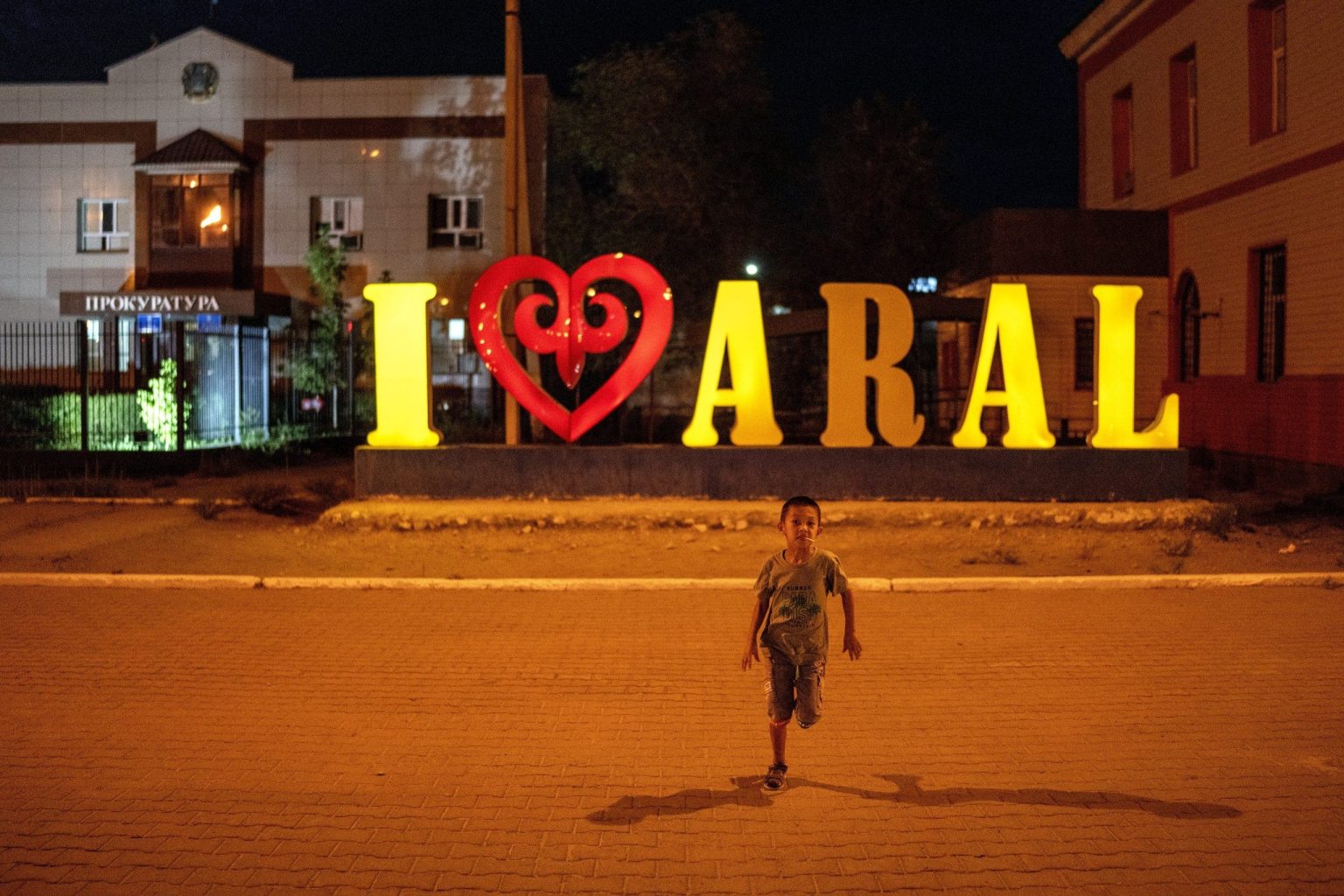There are signs of life in small pockets along the Aral Sea, despite the fact that the sea has nearly disappeared and the large communities it once sustained are no more. NASA images have revealed the shocking scale of the Aral Sea disaster, but some small towns and villages still exist with populations as small as 10 people. These areas boast new cafes, clothing stores, bodegas selling imported snacks, and modern signage in place of Soviet-era billboards. Trains run constantly, bringing residents back and attracting first-time visitors who sign guestbooks at museums displaying Aral artifacts.
While the streets may be empty during the day, they come alive at night with children playing soccer, teenagers filming videos for social media, and elderly men playing cards. Local festivals feature techno music, carnival games, and the camaraderie of the community. Remnants of the once prosperous Aral Sea can still be found, such as old fishing nets and buoys in backyards, rundown trucks serving as playgrounds for children, and murals depicting the sea life that used to thrive there. Dust storms often force people inside, but they quickly return to gather as a community after the storms.
In this area along the Aral Sea, there is a sense of resilience and determination among the people who have chosen to remain in these small towns and villages. They have adapted to the changing landscape and have found ways to create new opportunities for themselves. Despite the challenges posed by the disappearing sea and the harsh environment, there is a spirit of community and togetherness that shines through in the way they come together during festivals and other events. The continued presence of these small communities is a testament to the human capacity to adapt and thrive in even the most challenging circumstances.
The new businesses that have sprung up in these small towns and villages along the Aral Sea provide a sense of hope for the future. The cafes, clothing stores, and bodegas offer locals and visitors alike a taste of modernity and a glimpse of what is possible in this remote and desolate region. The bustling activity around the train station, the museums showcasing Aral artifacts, and the influx of visitors are all signs of the resilience and creativity of the people who call this area home. The presence of these new businesses and the increased economic activity they bring are a sign that life is slowly returning to the Aral Sea region.
Despite the challenges posed by the disappearing Aral Sea and the harsh environment, the people who have chosen to stay in these small communities have found ways to create a sense of normalcy and community. The children playing soccer, the teenagers filming videos, and the elderly men playing cards all contribute to a sense of life and vibrancy that belies the harsh reality of their surroundings. The festivals that bring people together and the museums that showcase the history of the Aral Sea are a testament to the resilience and determination of the people who have chosen to make their home in this challenging environment. The signs of life along the Aral Sea point to a brighter future and a sense of hope for the people who call this region home.
The ongoing presence of these small communities along the Aral Sea is a reminder of the importance of human connection and community in the face of adversity. Despite the challenges posed by the disappearing sea and the harsh environment, the people who have chosen to stay in these towns and villages have found ways to adapt and create a sense of normalcy and belonging. The festivals, businesses, and social activities that bring people together are a testament to the resilience and creativity of the human spirit. As the sun sets and the streets fill with activity, it is clear that life persists along the Aral Sea, and that the people who call this region home are determined to create a better future for themselves and their communities.


